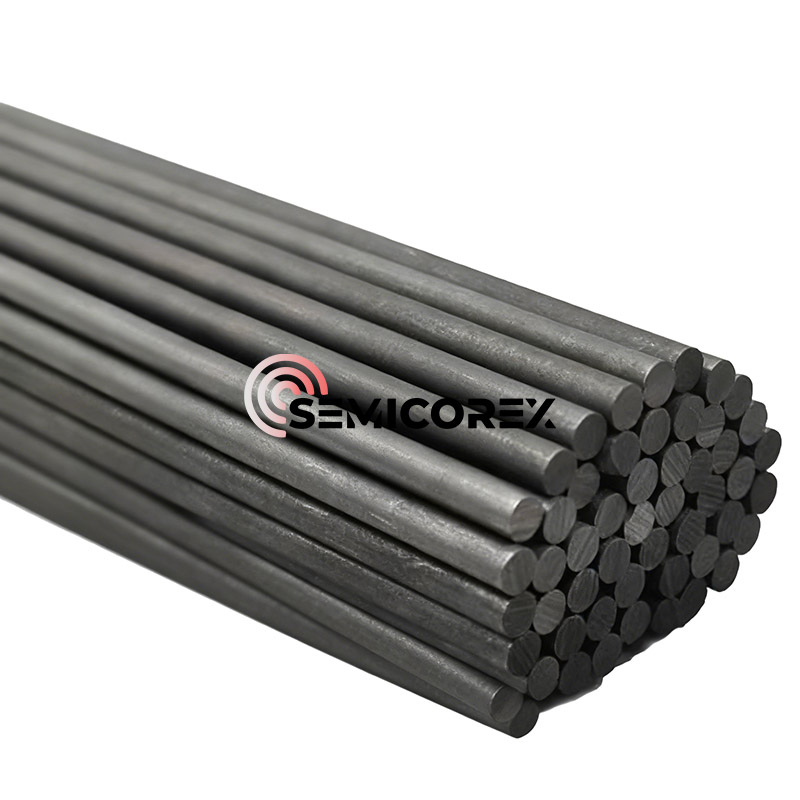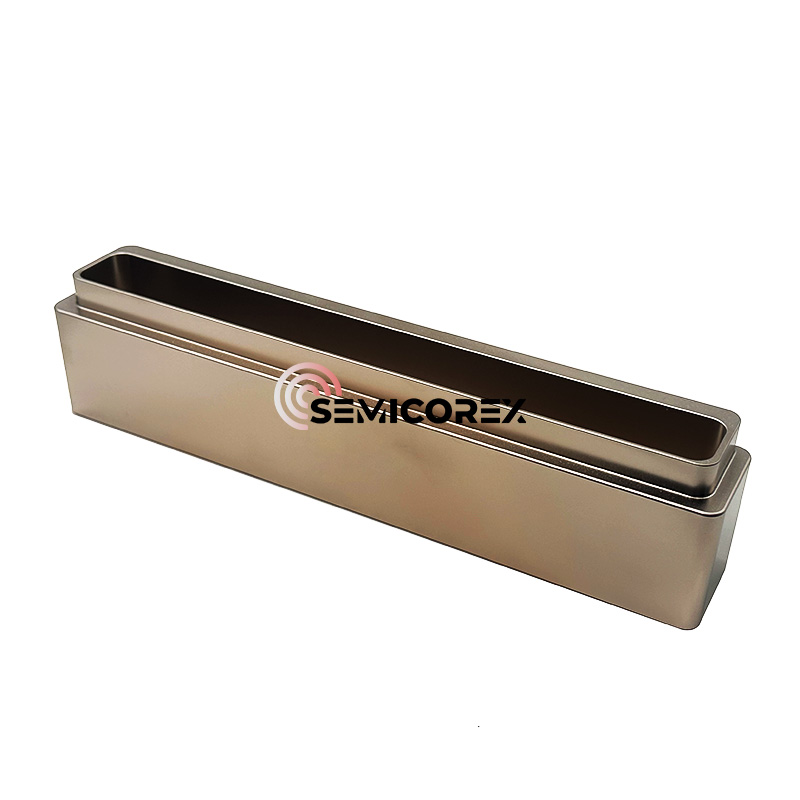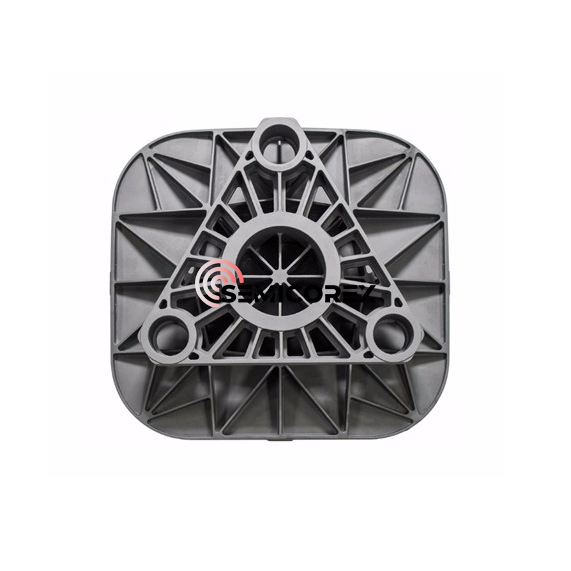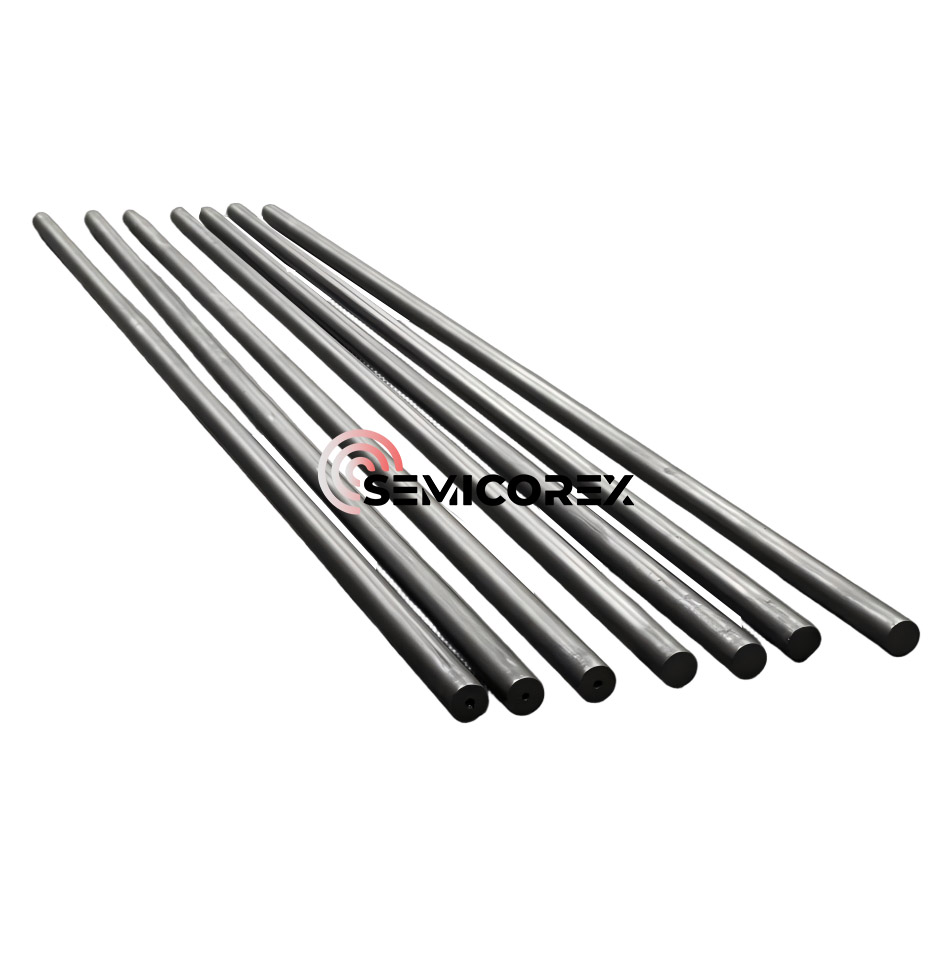
- English
- Español
- Português
- русский
- Français
- 日本語
- Deutsch
- tiếng Việt
- Italiano
- Nederlands
- ภาษาไทย
- Polski
- 한국어
- Svenska
- magyar
- Malay
- বাংলা ভাষার
- Dansk
- Suomi
- हिन्दी
- Pilipino
- Türkçe
- Gaeilge
- العربية
- Indonesia
- Norsk
- تمل
- český
- ελληνικά
- український
- Javanese
- فارسی
- தமிழ்
- తెలుగు
- नेपाली
- Burmese
- български
- ລາວ
- Latine
- Қазақша
- Euskal
- Azərbaycan
- Slovenský jazyk
- Македонски
- Lietuvos
- Eesti Keel
- Română
- Slovenski
- मराठी
- Srpski језик
Graphite Electrode Rod
Semicorex Graphite Electrode Rods are high-purity graphite components used as core heating elements in vacuum furnaces. Choose Semicorex for unmatched material quality, precision machining, and reliable performance in high-temperature vacuum environments.*
Send Inquiry
Semicorex Graphite Electrode Rods are high-performance heating elements suited for use in high-temperature vacuum furnaces. Constructed from high-purity, fine-grain graphite, these rods are designed to provide exceptional thermal conductivity and electrical performance, as well as high thermal performance under extreme conditions. Graphite electrode rods are the core heating element of vacuum furnaces, and perform as both heat source and a conductor of electric current while ensuring steady and uniform temperatures in the chamber.
Graphite Electrode Rods are rod-shaped product made of graphite material, which belongs to non-metallic products. Its manufacturing process is not simple. First, carbon, graphite and appropriate adhesives are fully mixed, and then extruded to form a rod. Then, after a high-temperature baking process of 2200℃, a layer of copper is plated before it is finally made. This process gives graphite rods unique properties and determines its important position in many fields. From the appearance, graphite rods are usually black or dark gray, with a smooth surface, relatively hard texture but with a certain toughness, and are not easy to break. Its shape is a standard cylindrical shape, and the common size specifications are diverse. The diameter can range from a few millimeters to tens of centimeters, and the length also varies according to different application scenarios, ranging from tens of centimeters to several meters.
Graphite Electrode Rods have excellent electric conductivity. It conducts electricity 4 times better than stainless steel, 2 times better than carbon steel, and 100 times better than non-metals in general. This property allows it to demonstrate its capabilities as a conductor in the electrical industry, making it a great candidate material for the production of electronic products, including electrodes, wires, and integrated circuits. Considering battery electrodes as an example, graphite rods can conduct current with much more ease, allow for improved battery charging/discharging performance, and will allow for a noticeable change in the battery life and how well the battery works.
Graphite is hundred times better at conducting electricity than everyday non-metallic minerals. Thermal conductivity also exceeds that of metals like steel, iron, and lead. Thermal conductivity decreases with increasing temperatures and graphite essentially becomes an insulator at very high temperatures. Graphite can conduct electricity because each carbon atom only makes three covalent bonds to each other carbon atom, which means each carbon atom has one free electron to transfer charge.
Graphite is a material that stands out in terms of the thermal and electrical characteristics for operation in vacuum furnace applications. The thermal conductivity of graphite is excellent, allowing for rapid generation of heat and superior heat transfer. The electrical conductivity of graphite allows for the even flow of current during operation. Additionally, the thermal performance of graphite when subjected to very high temperatures and the resistance to substantial deformation/degradation of the graphite material is important to ensure that the furnace and graphite electrode rod maintains integrity when operating for extended heating period and temperature. Typically, these electrode rods operate in inert or vacuum atmospheres where the more common metal heated elements are completely oxidized or compromised, thus making these electrode rods truly unique in very special applications where ultra-clean and controlled heating are required.
Graphite electrode rods are utilized in many applications including, but not limited to, heat treatment of metals, sintering of ceramics, semiconductor fabrication, and crystal growth, where a uniform high temperature is required and the process requires a clean processing. In some instances, these rods can be specially made to fit certain power ratings and thermal profiles and thus provide a tailored option to meet specific processes as required.
Overall, graphite electrode rods are necessary components of modern vacuum furnace systems; providing heat generation and current conduction in a compact, robust format. With the addition of remarkable thermal and electrical properties, graphite electrode rods will provide stability, repeatability, and endurance in high temperature vacuum processes, making them a perfect addition for advanced material processing and vacuum applications at high temperatures.














